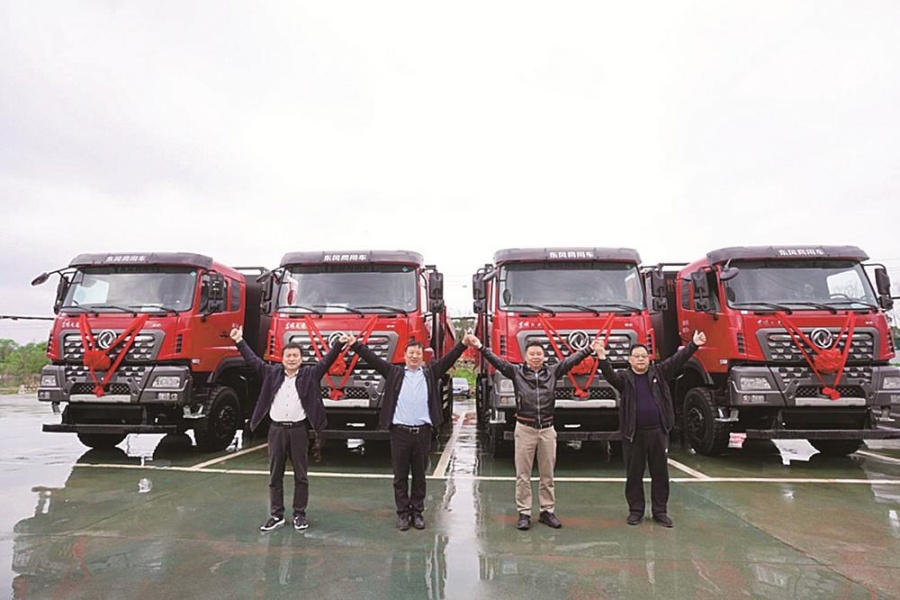一季度新能源商用车销量增长近5成
当前,新能源商用车机遇与挑战并存。
近日,中国汽车工业协会发布数据显示,3月商用车产销分别完成43.1万辆和44.7万辆,环比分别增长35.8%和42.8%。1~3月商用车产量为104.8万辆,同比增长5.1%;销量为105.1万辆,同比增长1.8%。
具体来看,新能源商用车销量持续增长,渗透率持续提升。一季度,新能源商用车国内销量14.9万辆,同比增长48.6%。新能源商用车国内销量占商用车国内销量比例为18.4%。此外,一季度,新能源商用车出口2.3万辆,同比增长2.3倍。出口增速迅猛。销量14.9万辆,同比增长48.6%。
其中,换电重卡在港口、矿区等场景加速替代燃油车;新能源客车销量也呈现增长态势,公共领域车辆电动化政策效应显现。
当前,新能源商用车充换电补能的痛点仍有待解决,选择充电还是换电仍是业内关注的焦点。
东风商用车公司最早推出换电模式新能源卡车和充电模式牵引头,在行业运用中得到用户好评;俊风公司推进的新能源重型矿车,也在国内外得到用户认可。

近日,为解决补能痛点,广汽日野与广汽能源达成战略合作,明确重卡补能设备“2030年万桩”的补能网络建设目标,打造覆盖全国的商用车补能网络。双方将在车辆销售、客户服务、站点建设等领域,共同构建“车-桩-网-端”一体化补能生态。在轻卡领域,广汽能源将向广汽日野用户全面开放现有充电资源,同时,市面上绝大部分车型都可接入该充电设备。
根据规划,“2030年万桩计划”包含乘用车和商用车两个板块,其中商用车板块在2025年计划新增投建1000桩,全国投建,优先布局优质业务场景,优先匹配广汽商用车战略发展需求,车桩协同,助力广汽商用车“135”战略。

在此前2025商用车产业发展会议上,华为技术有限公司数字能源全球充电业务总裁刘大伟表示,由于超充场站用地面积更小,且设备投资和运维成本也更低,因此综合成本将比换电节省近一半,更值得在重卡领域推广与应用。
十三届全国政协经济委员会副主任、工业和信息化部原党组副书记、副部长苏波则认为,商用车电动化产业政策以“节能减排”为目标,以市场选择为导向,不应过度区分技术路线,推动充换电技术路线共同发展等建议。
新能源商用车发展仍是机遇与挑战并存。宁德时代能源科技股份商用事业部总工蒋于伟表示,自2018年以来,国内新能源商用车电动化率从5%提升到20%,已跨越拐点迎来高速增长期,预计到2025年,新能源商用车销量将达到110万辆,电动化率为29%,到2030年,电动化率将超过70%。
三一集团重卡事业部总经理罗畅国在中国电动汽车百人会论坛(2025)上表示。“当前我国乘用车市场竞争已经进入了淘汰赛阶段,而新能源商用车的发展相较于乘用车滞后大概一个周期,目前还处于资本扩张和技术积累阶段,仍不断有新势力和新资本涌入,按目前情况看,预计2026年开始会走向淘汰赛竞争。”
Currently, opportunities and challenges coexist for new energy commercial vehicles.
Recently, the China Association of Automobile Manufacturers released data showing that the production and sales of commercial vehicles in March reached 431000 and 447000 respectively, with a month on month increase of 35.8% and 42.8%, respectively. The production of commercial vehicles from January to March was 1.048 million units, a year-on-year increase of 5.1%; The sales volume was 1.051 million units, a year-on-year increase of 1.8%.
Specifically, the sales volume of new energy commercial vehicles continues to grow, and the penetration rate continues to increase. In the first quarter, the domestic sales of new energy commercial vehicles reached 149000 units, a year-on-year increase of 48.6%. The domestic sales of new energy commercial vehicles account for 18.4% of the domestic sales of commercial vehicles. In addition, in the first quarter, 23000 new energy commercial vehicles were exported, a year-on-year increase of 2.3 times. The export growth rate is rapid. The sales volume was 149000 units, a year-on-year increase of 48.6%.
Among them, battery swapping heavy-duty trucks are accelerating the replacement of fuel vehicles in scenarios such as ports and mining areas; The sales of new energy buses are also showing an increasing trend, and the policy effect of electrification of public sector vehicles is evident.
Currently, the pain points of charging, swapping, and replenishing energy for new energy commercial vehicles still need to be addressed, and the choice between charging and swapping remains a focus of attention in the industry.
Dongfeng Commercial Vehicle Company was the first to launch new energy trucks with battery swapping mode and charging mode tractors, which have received high praise from users in the industry; The new energy heavy-duty mining truck promoted by Junfeng Company has also been recognized by users both domestically and internationally.
Recently, in order to address the pain points of energy replenishment, GAC Hino and GAC Energy have reached a strategic cooperation, clarifying the goal of building an energy replenishment network for heavy-duty truck energy replenishment equipment with 10000 piles by 2030, and creating a commercial vehicle energy replenishment network covering the whole country. Both parties will jointly build an integrated energy supplement ecosystem of vehicle pile network end in areas such as vehicle sales, customer service, and site construction. In the field of light trucks, GAC Energy will fully open up existing charging resources to GAC Hino users, and at the same time, the vast majority of models on the market can be connected to this charging device.
According to the plan, the 2030 Ten Thousand Pile Plan includes two sections: passenger cars and commercial vehicles. The commercial vehicle section plans to invest in 1000 new piles nationwide by 2025, with priority given to high-quality business scenarios and matching the strategic development needs of GAC commercial vehicles. Vehicle pile collaboration will help support GACs 135 strategy for commercial vehicles.
At the 2025 Commercial Vehicle Industry Development Conference, Liu Dawei, President of Global Charging Business for Digital Energy at Huawei Technologies Co., Ltd., stated that due to the smaller land area of supercharging stations and lower equipment investment and operation costs, the comprehensive cost will be saved by nearly half compared to battery swapping, making it more worthy of promotion and application in the heavy truck field.
Su Bo, Deputy Director of the Economic Committee of the 13th National Committee of the Chinese Peoples Political Consultative Conference, former Deputy Secretary of the Party Group and Deputy Minister of the Ministry of Industry and Information Technology, believes that the policy of commercial vehicle electrification industry should aim for energy conservation and emission reduction, be market-oriented, and should not overly differentiate technical routes, promoting the common development of charging and swapping technology routes, and other suggestions.
The development of new energy commercial vehicles still presents both opportunities and challenges. Jiang Yuwei, Chief Engineer of the Commercial Business Unit of CATL Energy Technology Co., Ltd., stated that since 2018, the electrification rate of new energy commercial vehicles in China has increased from 5% to 20%, marking a turning point and ushering in a period of rapid growth. It is expected that by 2025, the sales volume of new energy commercial vehicles will reach 1.1 million, with an electrification rate of 29%. By 2030, the electrification rate will exceed 70%.
Luo Changguo, General Manager of Sany Groups Heavy Truck Division, stated at the China Electric Vehicle Hundred People Forum (2025). At present, the competition in Chinas passenger car market has entered the knockout stage, and the development of new energy commercial vehicles lags behind passenger cars by about a cycle. Currently, it is still in the stage of capital expansion and technology accumulation, and there are still new forces and new capital pouring in. Based on the current situation, it is expected that it will enter the knockout stage competition from 2026。

